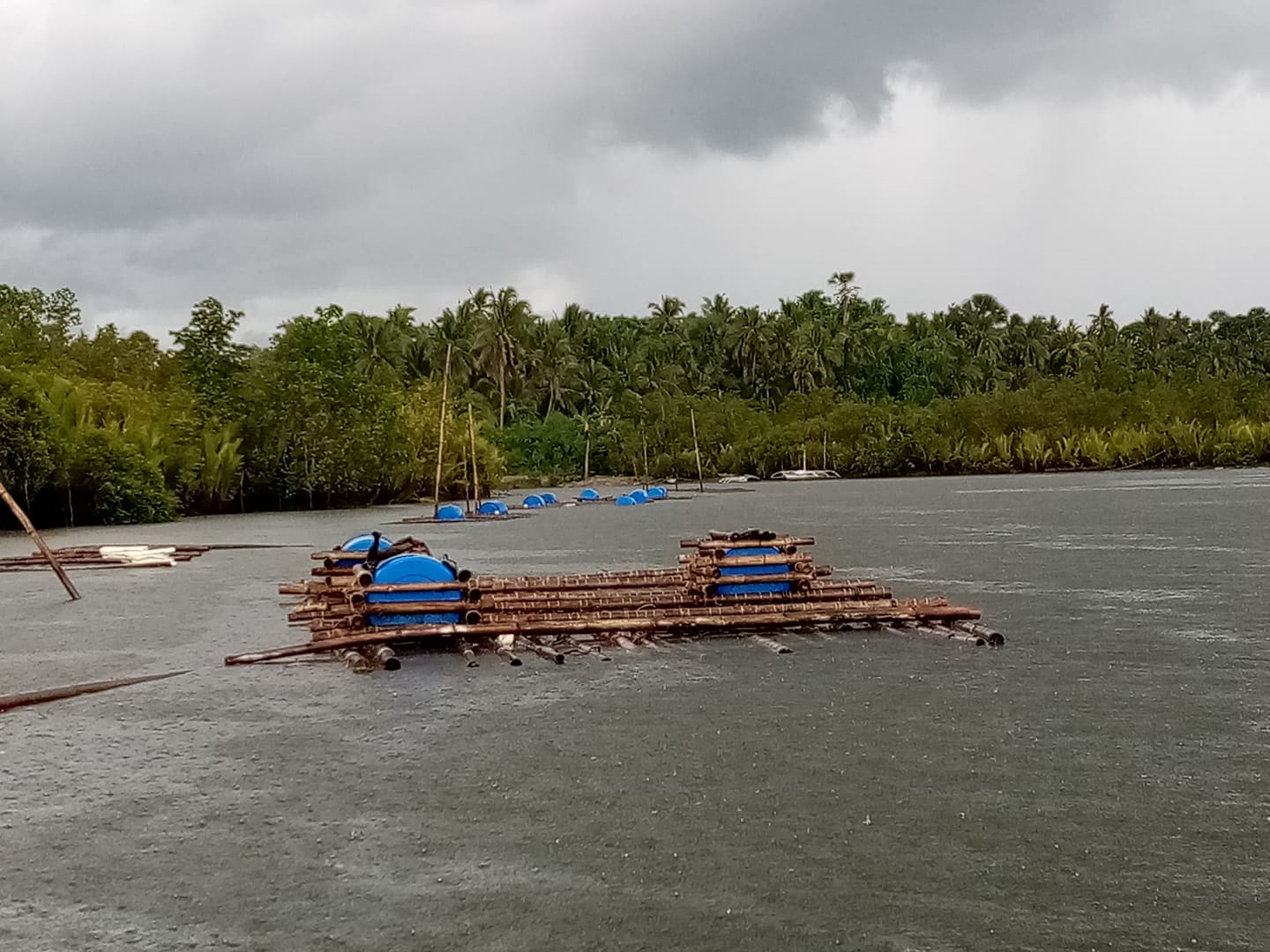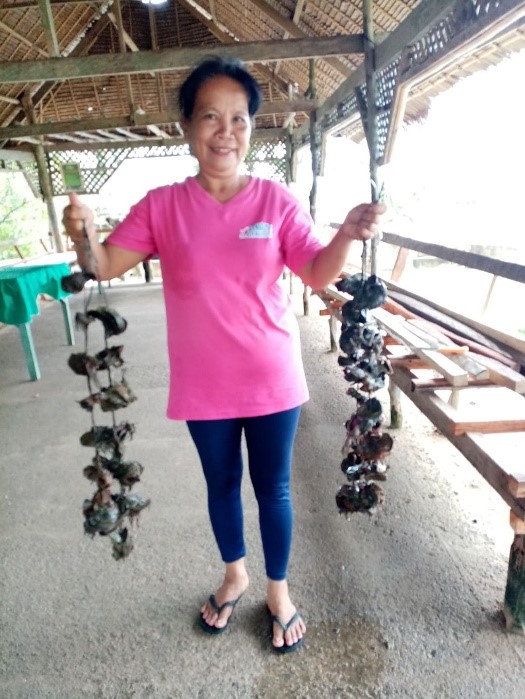“The world is my oyster”, said Cresencia Aparici Añasco, a 55-year-old beneficiary of the Department of Agriculture-Special Area for Agricultural Development (DA-SAAD) Program, as she referred to the bivalve mollusc as an opportunity that came into her life.
Cresencia received intervention for an oyster culture project from the Bureau of Fisheries and Aquatic Resources with a package of training conducted at Barangay Cambuhat Oyster Farm in July 2019.
As a widow with 8 children living in Buenavista, Bohol, she is glad of the livelihood assistance. She only graduated at elementary level that is why she persevered to support her family.
Her determination landed her in a job as an ecotourism staff at the Cambuhat Oyster Farm in the town. Cresencia got help from her children in maintaining the oyster farm. They began engaging in oyster culture in 1999 up to the present.
“Mao ni nakatabang sa akong mga anak para pa eskwela og konsumo sa among pagkaon tungod kay sukad nabyuda ko niadtong 2012, ako na lang usa ang nagpadako sa akong mga anak,” (This (project) helped support the studies of my children and on our daily sustenance because since I became a widow in 2012, I was the one left to provide for my children’s needs) she said. Cresencia was elated to be picked as one of the beneficiaries of the SAAD-funded projects in the town.
As a SAAD beneficiary, she received Php 24,490 worth of input materials including oyster spats, bamboo poles, plastic drums, nylon, rope, and barrel-type styrofoam for 40 sqm.
Right after the training, Cresencia together with her son prepared for the necessary materials and then installed the structure for oyster culture to start operating the project.
Climate change brought several impacts to the agriculture sector such as in aquaculture. Unfortunately, Cresencia’s oyster farm was affected by the hila-hila disease , which carries organisms that enter the oyster spat and infest the oyster flesh.
The problem affected the family’s harvest since most of the oysters died. Amid the risk, Cresencia continued with the project and found efficient means to counter further contamination.
For risk mitigation, Añasco initiated some measures to lessen the spread of the disease. They transferred the oysters, which are placed on a floating raft, from one place to the other to save the unaffected oysters. They also check regularly each oyster line to see if the disease might have contaminated the transferred oysters.
SAAD project’s results and Cresencia’s plan
On July 12, 2020, Cresencia gathered 50 kilograms of fresh oyster that were sold at Php 20 per kilo. She earned almost Php 1,000 in a one-time harvest. For now, they are scouting for buyers before they harvest fresh oysters.
Cresencia plans to add an additional area for oyster culture once they receive the second intervention of SAAD Program in 2020.
As a Vice-President of Cambuhat Enterprise Development and Fisheries Association, she also plans to increase the group’s membership.
Writers:
Jemiema Arro, DA SAAD, PR and Communication Officer
May Miasco – Cabucos, BRAF SAAD Region 7, Information Officer




Comments (0)